EESA06 Topic 5: Earth Materials
1/77
There's no tags or description
Looks like no tags are added yet.
Name | Mastery | Learn | Test | Matching | Spaced |
|---|
No study sessions yet.
78 Terms
what is a rock?
naturally formed, consolidated material
composed of grains of 1+ minerals
what is a mineral?
naturally occuring, inorganic crystalline solid
has a specific chemical composition
building blocks of rocks
what are some common minerals in Earth’s crust? which is the most important and why?
quartz
feldspar
most important because it is common in both continental and oceanic crust
biotite
what are 2 characteristics do all minerals have unique to them?
prescribed composition
i.e., a chemical formula
structural arrangement
i.e., a crystal lattice
describe the crystal lattice of a mineral
a ridigid structure describing how elements are arranged in a mineral
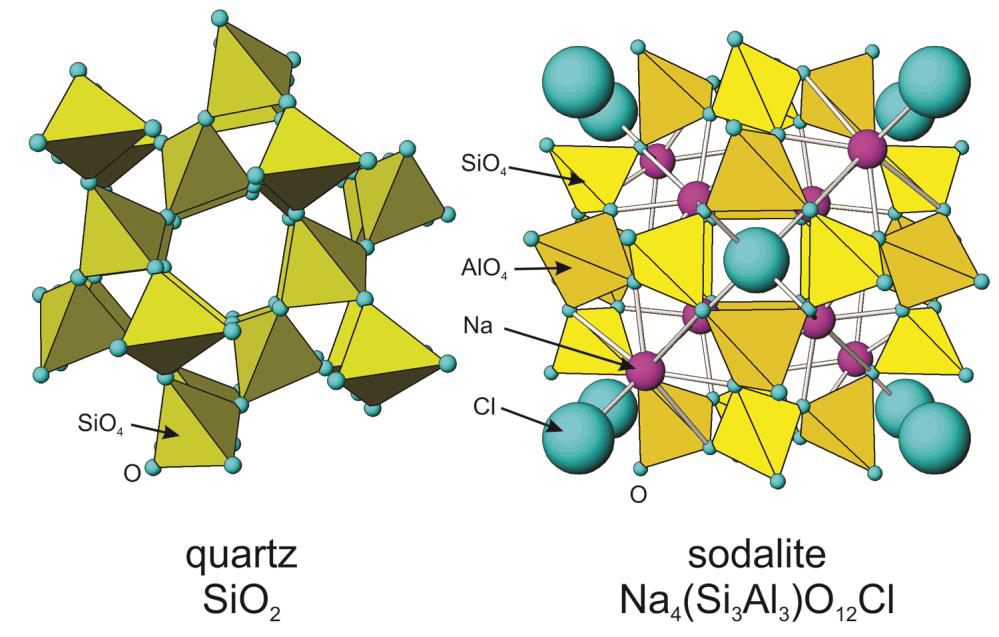
do chemical formulas have range?
yes
some elements can be substituted for others due to similarities
define rockhounding
the hobby of searching for and collecting rocks and minerals
how can you differentiate minerals?
streak
colour
shape
cleavage
harness
lustre
is using colour a reliable way to identify minerals? describe.
no - it’s the least accurate, despite being the most noticable
any little impurity can change the colour, despite
same chemical structure
similar physical characteristics
describe the streak of a mineral
the colour of the fine powder produced by rubbing a mineral on a streak plate
e.g., hematite - red/brown (image)
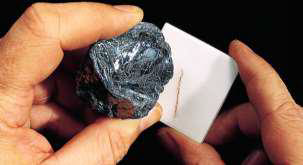
define crystallography
the study of crystal shapes
what can the crystal shape be reflective of?
if grown in an uninhibited manner, shape can reflect a mineral’s crystal lattice
define mineral cleavage
the shape of mineral when broken
tendency for minerals to break (or cleave) along regular plains where the crystal structure is weak
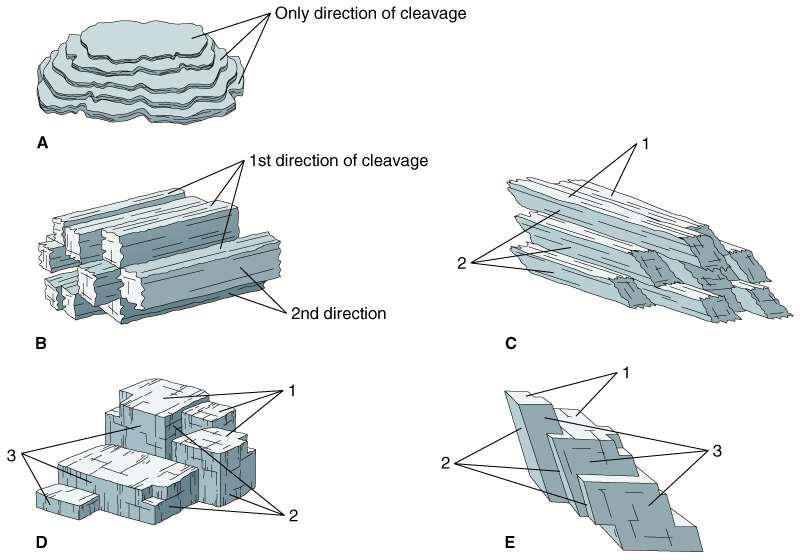
describe the characteristics of mica
composed of biotite and muscovite
e.g. of a mineral with good cleavage
used in make-up, electronics, etc.

define lustre
the way light is reflected in a mineral
what are the different descriptor words for lustre?
submetallic
adamantine
pearly
silky
greasy
dull
vitreous
earthy
resinous
metallic
define vitreous lustre and give an example of a mineral with this lustre
reflects white light like glass
e.g., quartz
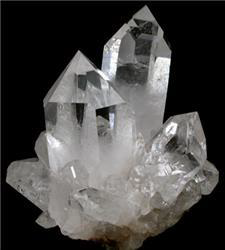
define hardness
the scratchability of a mineral
what scales can measure mineral hardness? how do they differ?
Mohs hardness scale
Vickers hardness test
difference → Vickers is more objective than Mohs
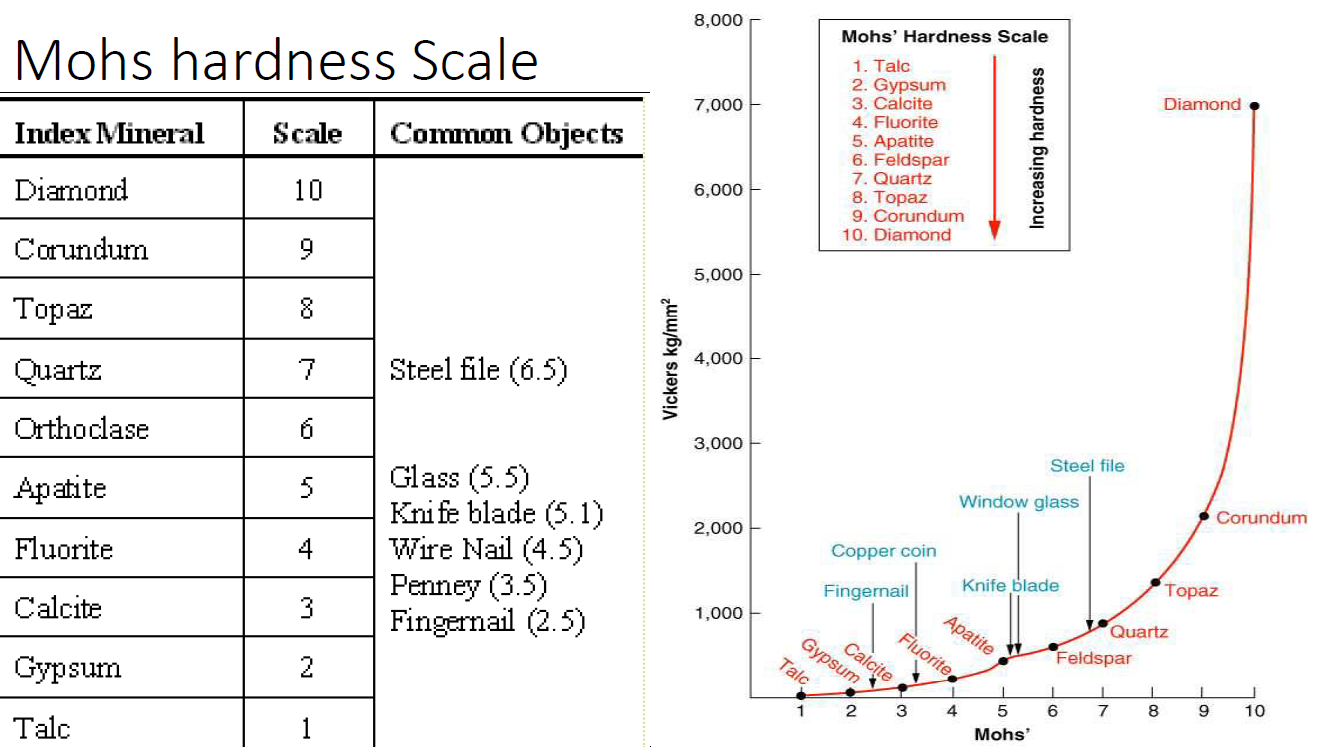
how might you use soft minerals vs. hard minerals?
soft → lubricants
hard → drilling (e.g., industrial diamonds)
what are the most important group of minerals? why?
silicate minerals - i.e., those containing silicon and oxygen (SiO3)
they make up 90% of all minerals
where are non-silicate minerals most common?
the continental crust (i.e., not oceanic)
what are the most common non-silicate minerals?
carbonates
evaporites
metallic minerals
describe and give examples of carbonates
often products of organism decay (e.g., shelled animals)
CO3 released from their skeletons
often found in limestone
e.g., calcite, dolomite
describe and give examples of evaprites
formed from fluid evaporation (e.g., salt water)
e.g., halite
describe and give examples of ores (i.e., metallic minerals)
main components are metals, which are joined with sulphur or oxygen
e.g., galena (lead), sphalerite (zinc)
what is the importance of ores?
they’re the foundation of mineral resource industry
i.e., sustains our societies dependance on consuming large volumes of metals
what are the stages of the Life Cycle of a Mine (mineral resource development cycle)?
exploration
discovery
development
production
reclamation
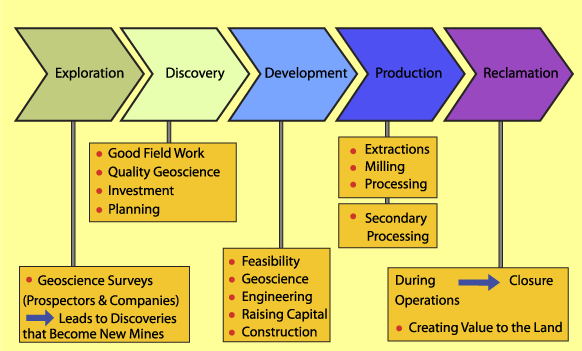
what is gangue?
unwanted “stuff” in ore
i.e., by-product of mining for metal
why is gangue an environmental issue?
there is a large quantity
lots of surface area + water interaction → dangerous by-product
i.e., it is important to know what to do with it after mining
what is the role of prospectors in the mineral resource development cycle?
the exploration for mineral resources
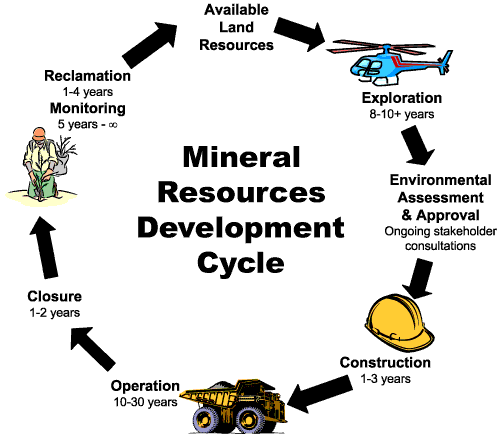
describe placer deposits and why panning is beneficial to find them?
natural accumulation of minerals that have been eroded from their original source
they’re concentrated at the surface, making them easily accessible by panning
how can geophysics help during the prospecting stage of the mineral resource development cycle?
magnetometry
e.g., is there a magnetic anomoly
gravimetry
e.g., is gravity too high?
seismic
i.e., help generate a piture of underground
electrical conductivity
different minerals = different electrical conductivity → send electrical current
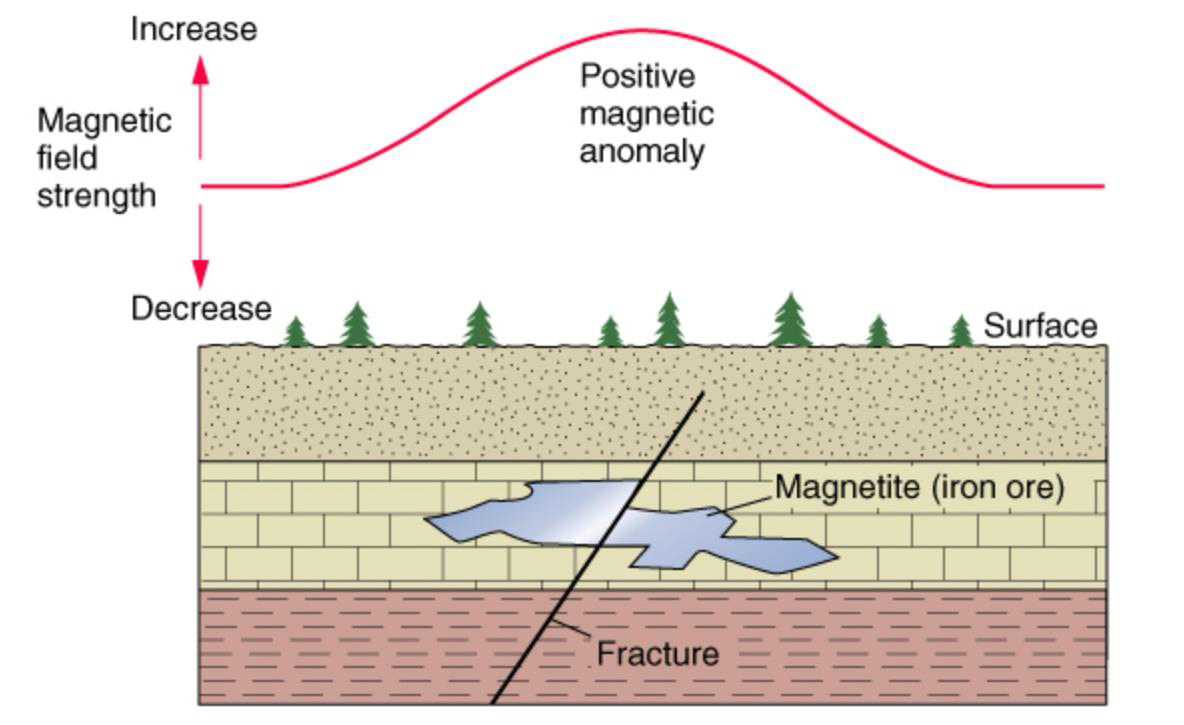
when might you use geochemical anomolies versus panning?
geochemical anomolies can be best if panning is too disruptive
e.g., to ecosystems in streams
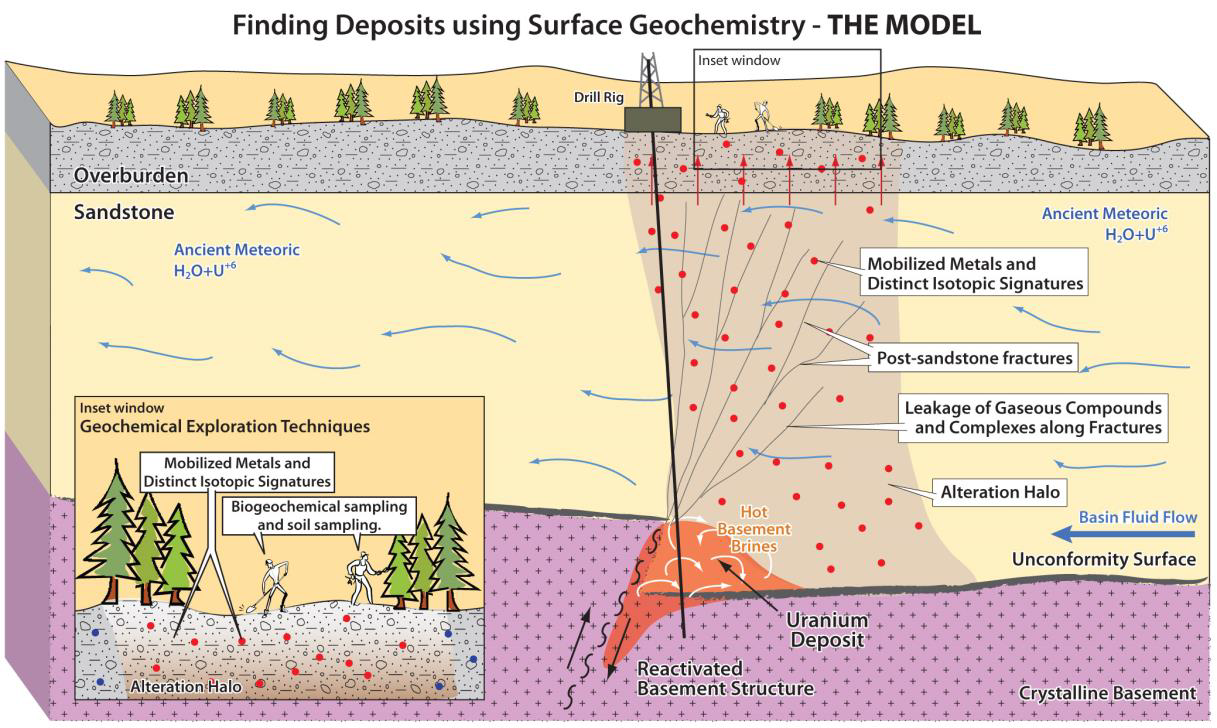
what is the Canadian Shield and how discovered?
what
where many Canadian mineral deposits are
old rock + different rock types in contact + hydrothermal circulation → mineral deposits
when
magnetometry
(they were covered by sedimentary rocks)
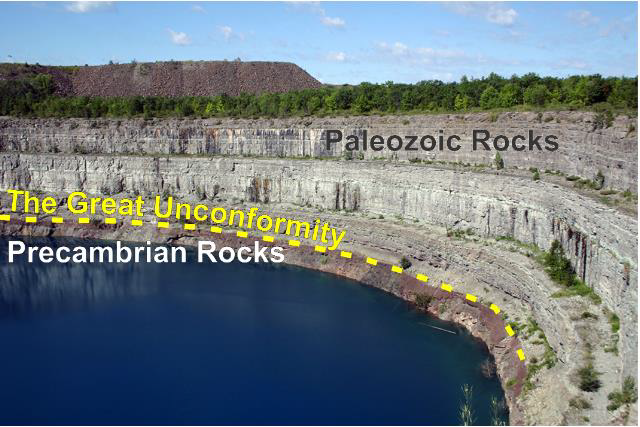
what must developers do to get a mine built?
raise capital
develop ore body models
environmental assessments and reclamation plans
economic viability feasibilty
regulations
construction
production
What process is responsible for the concentration of metals in old rocks?
Hydrothermal alteration
hot fluids move through rocks, carrying and depositing minerals
What are two geological features often associated with hydrothermal alteration?
faults
magmatic bodies.
What is an example of hydrothermal mineral deposition found on the ocean floor?
Black smokers
i.e., hydrothermal vents that emit mineral-rich fluids.
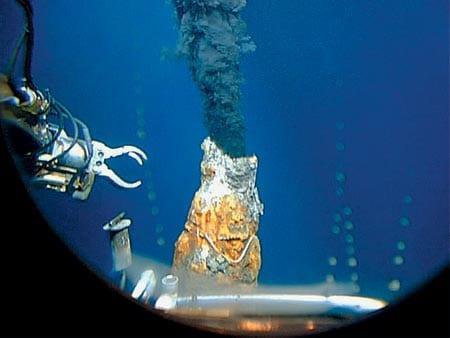
How do metallic mineral veins form?
Hot fluids move through rock fractures, carrying minerals that crystallize and form veins.
What type of mineral deposit is shown in the second image (gold veins in rock)?
hydrothermal vein deposit
e.g., minerals like gold are deposited by circulating hot fluids
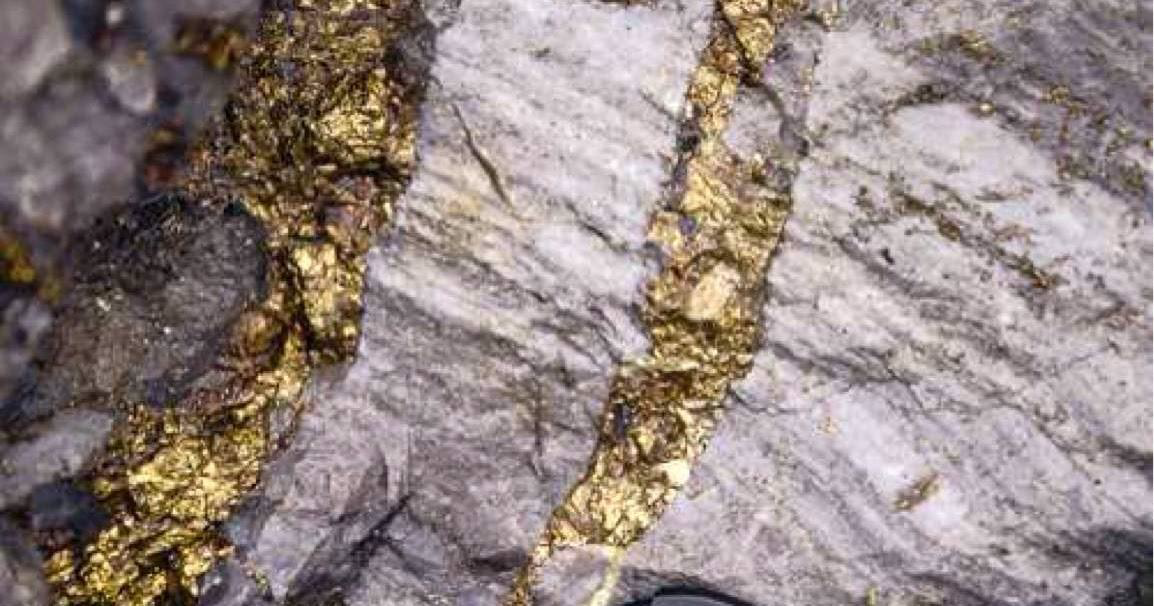
is “green energy” an entirely “green” process?
no
many minerals — therefore a lot of mining — is needed to make “green energy"
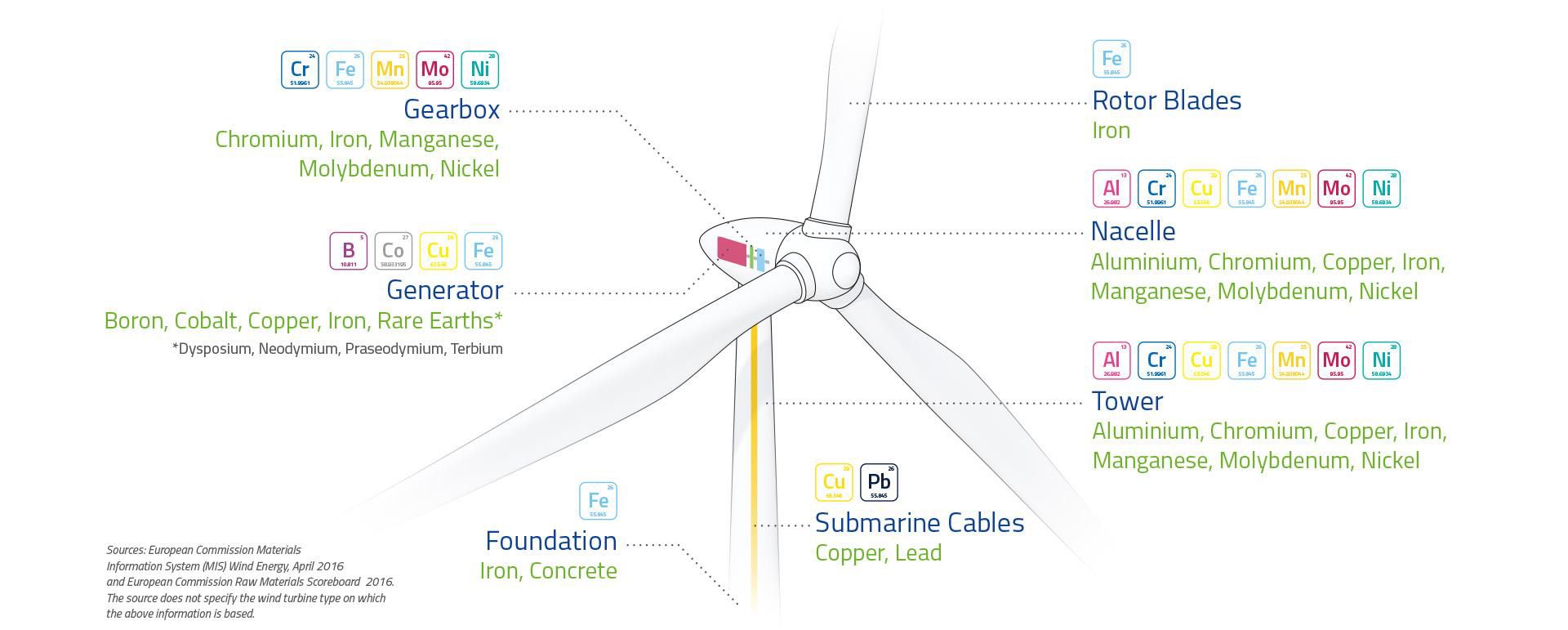
describe the elements of the rock cycle
key notes:
weathering = rocks broken down into small particles
transportation = particles move
deposition = particles rest in new place
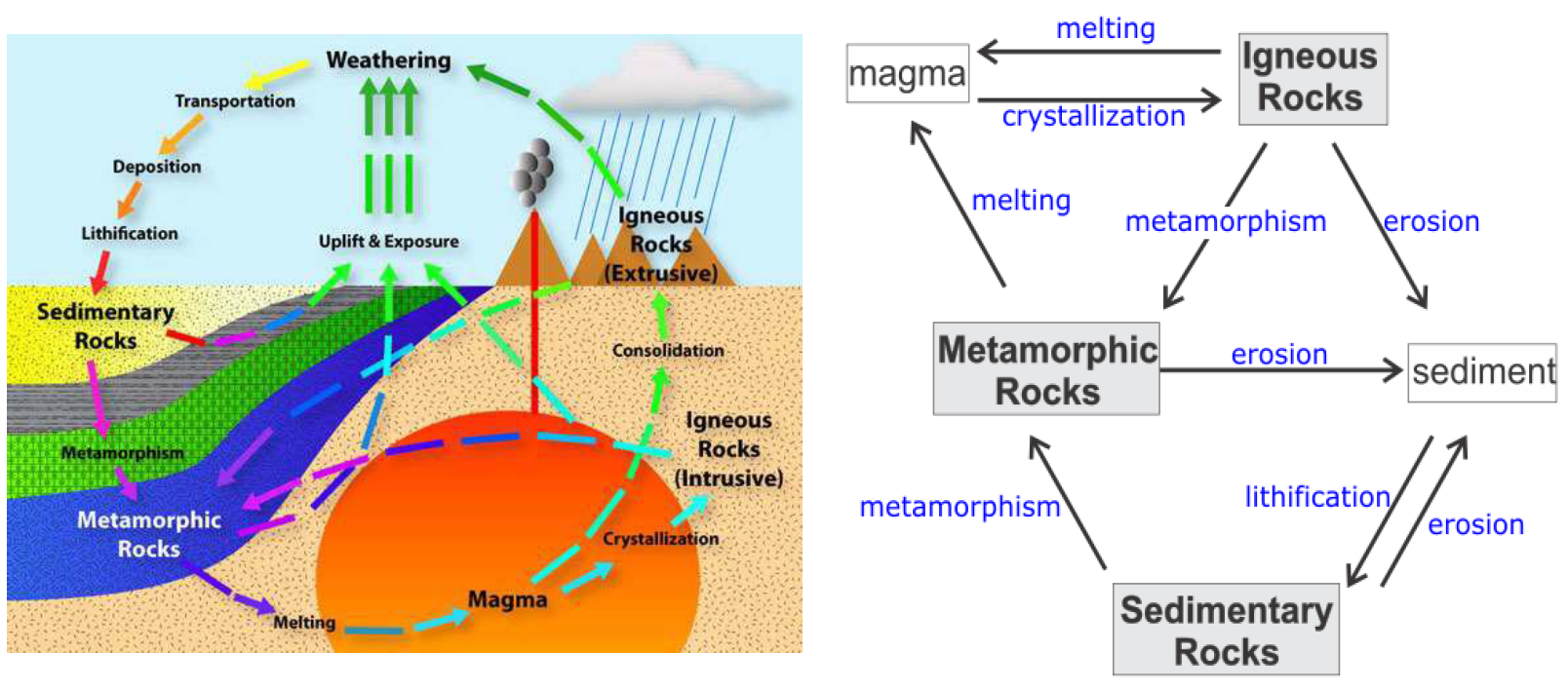
what processes are metamorphic rocks the result of?
conditions influencing sedimentary and igneous rock stability
e.g., pressure + heat → metamorphasis
how does magma differentiate?
different minerals crystalize at different temperatures
e.g., mafic at higher temperatures than felsic
differentiation can occur when the solid and liquid separate
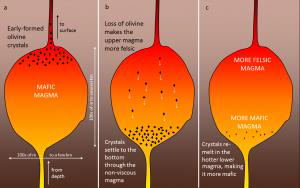
describe pegmatities and how they arise
what
igneous rocks
tend to be last remnants of a cooling magma chamber
very silica-rich
very large crystals
how
extreme magma differentiation
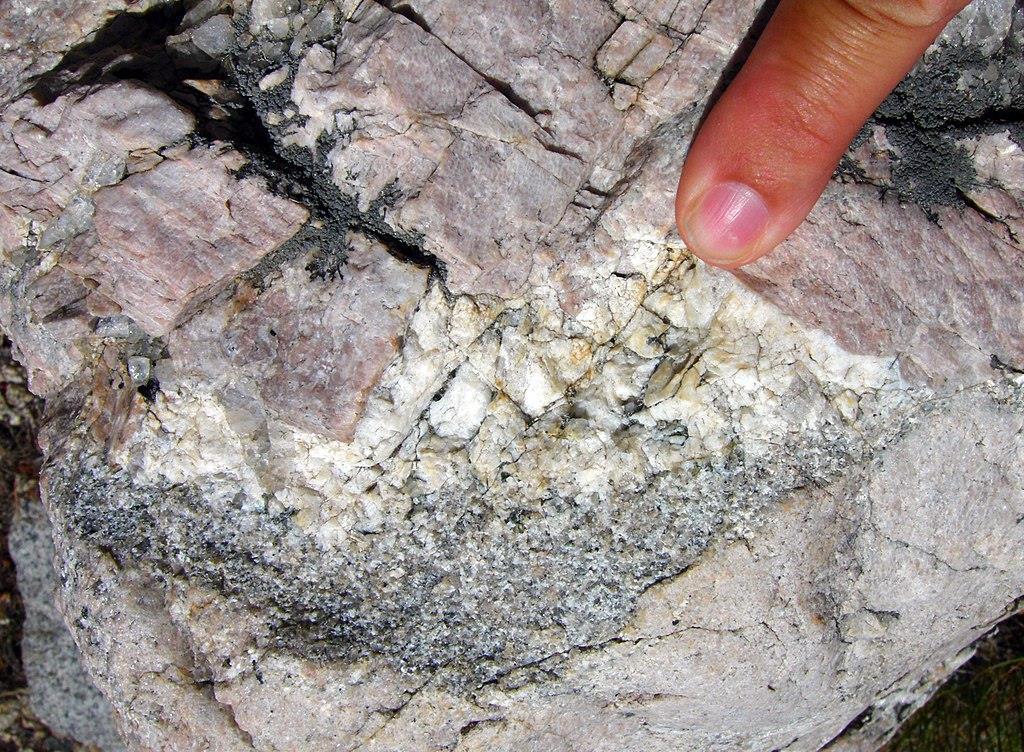
what are pegmatites enriched in?
lithium
rare earth elements
industrial minerals (e.g., mica)
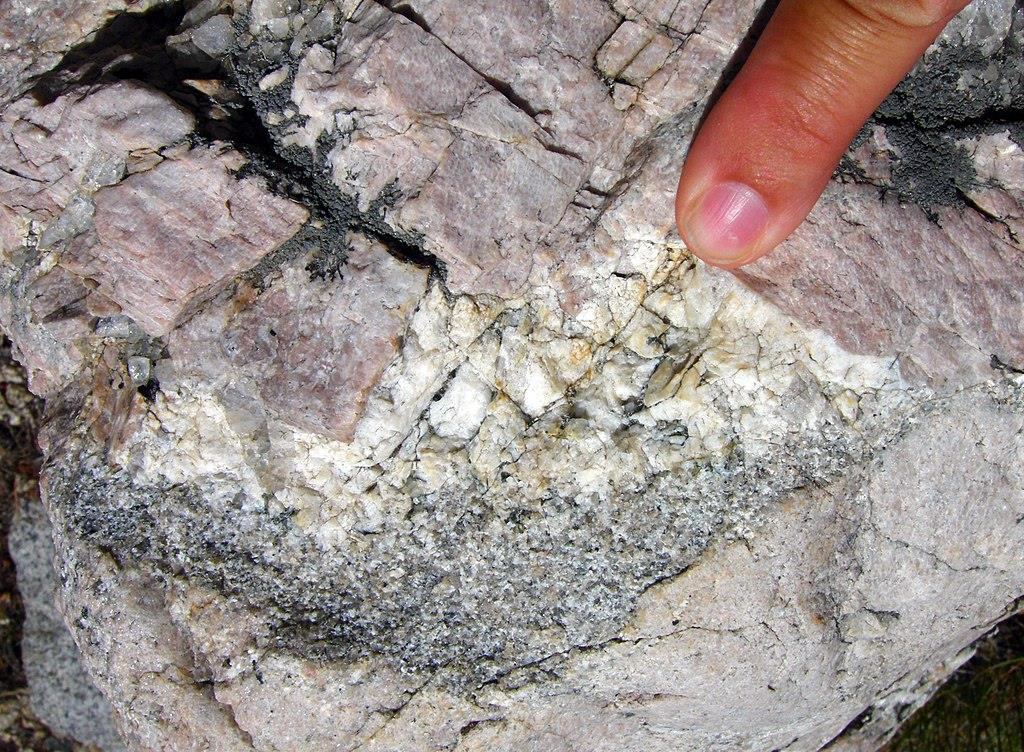
what are incompatable elements?
elements that try to crystalize out of a structure
what are some uses of igneous rocks?
tell tectonic situations
different types at different ancient plate boundaries
building
building facades
countertops
flooring
landscaping
monuments
why are igneous rocks useful for building?
they are
hard
homogenous
often locally abundant
what are sedimentary rocks the result of?
the breakdown of surface rocks
sediments interacting with the surface of Earth

describe weathering
breaking rock forms into small pieces/particles
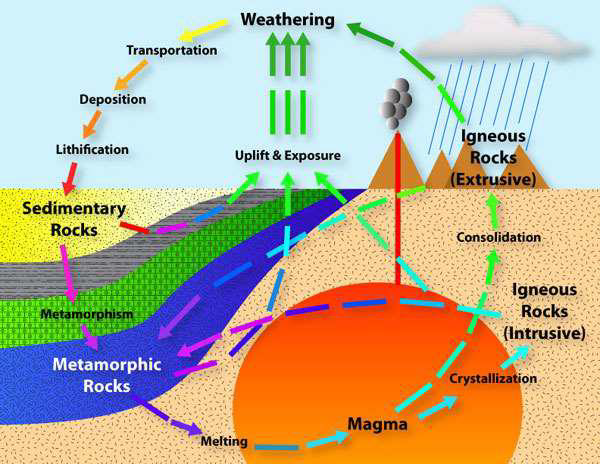
describe transportation
moving particles
requires an agenet to move them (e.g., wind, water, gravity)
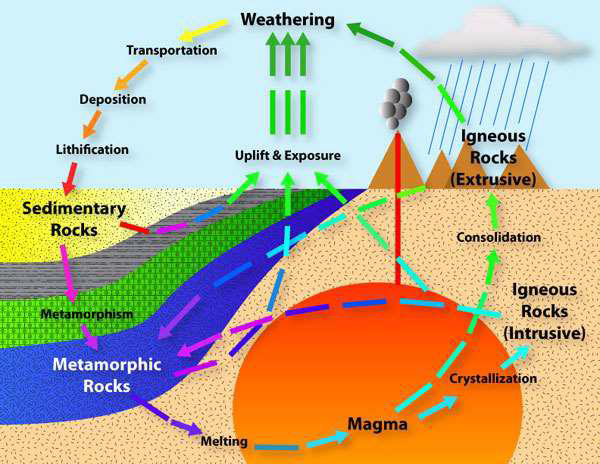
describe deposition
leying particles down

describe lithification
grains/particles get compacted
pores close as a result of some force
fuild precipitates out

what can sedimentary rocks tell us about Earth history?
what was the Earth like in the past?
how has climate changes?
how has life changed?
differentiate what igneous and sedimentary rocks tell us about the Earth
igneous → plate tectonics
sedimentary → activity on the surface
list 2 types of weathering
mechanical
chemical
what are clastic rocks? list some types.
sedimentary rocks made of fragments, or clasts, of pre-existing rocks
e.g.,
mudstone
sandstone
conglomerate
breccia

what do textural analyses of rocks tell you?
how grains are transported
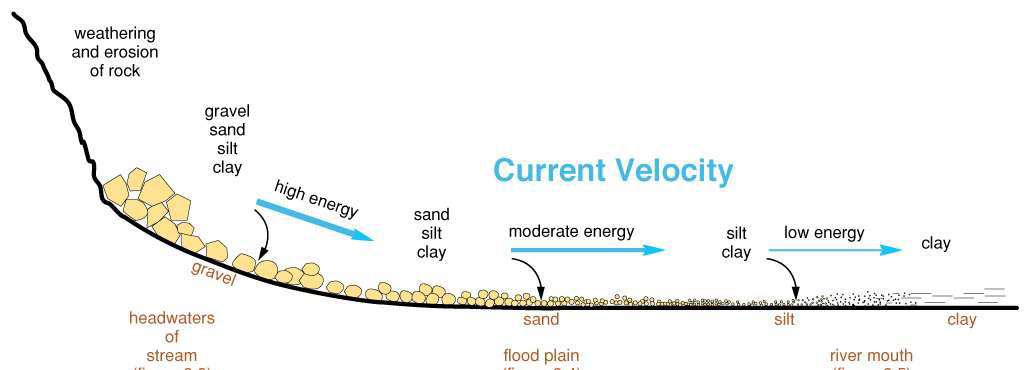
describe sedimentary structures
physical features of sedimentary rocks, such as bedding, ripple marks, and mud cracks
left behind by transportation of sediment
evidence of surface processes
what are ichnoFossils?
fossils recording biological movement
i.e., biological modes of transportation
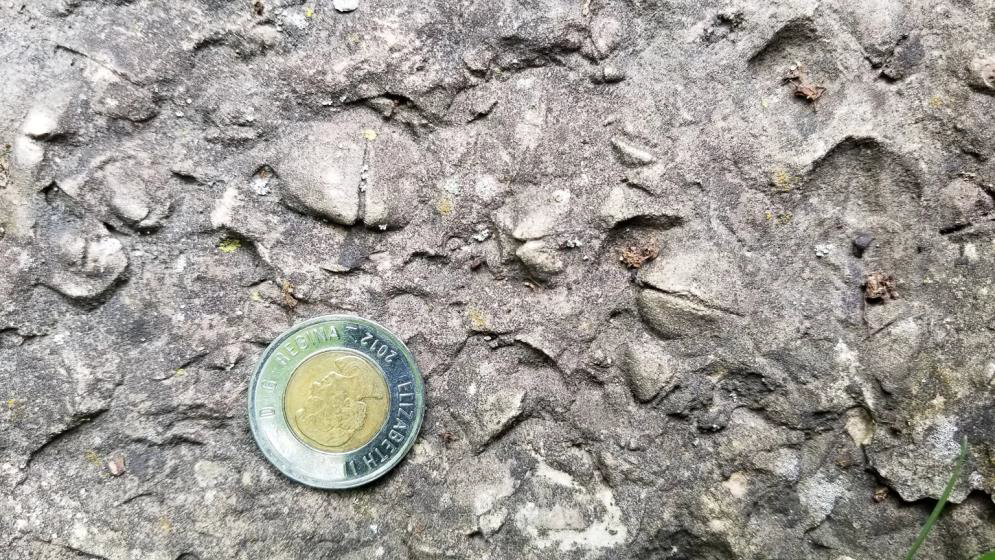
describe chemical weathering
breakdown of minerals by water
can be dissolved into ions or altered into a new mineral
dissolved ions can be precipitated into other rocks
why is the ocean salty?
it’s the end point for water that dissolves minerals
i.e., high mineral content → salty
differentiate between biochemical rocks and chemical rocks
biochemical → sedimentary rocks that form from the remains of living organisms
e.g., limestone
chemical rocks → rocks formed from evaporation of water and the precipitation of ions over time
e.g., evaporite
what are evaporites and what mineral are they high in?
rocks produced by seawater evaporation
high in lithium
what are bioclastic carbonate rocks?
clastic and biochemical rocks
e.g., coral reef that gets weathered and moved
what is stratigraphy?
using “layers” to reconstruct a sequence of events
what resources are held in sedimentary rock?
water
hydrocarbons (oil, gas)
coal
metals (ore bodies)
placer deposits (gold, diamond, etc.)
aggregate, cement, building stone, etc.
industrial minerals
what are metamorphic rocks the result of?
alteration without melting
mineral change when rocks undergo changes in heat and pressure
what might metamorphic rocks be used for?
reconstructing paleotectonics
mineral deposits
building stones
what are the 3 types of metamorphism?
contact metamorphism
regional metamorphism
hydrothermal metamorphism
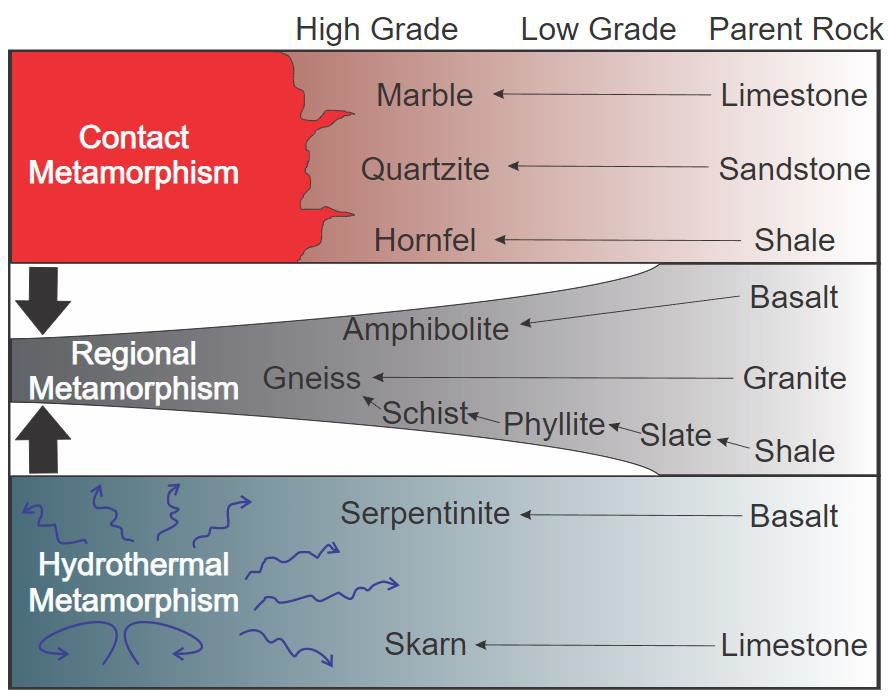
describe contact metamorphism
parent rock is altered because it’s sitting next to something very hot (e.g., magma chamber)
i.e. heat-induced metamorphism
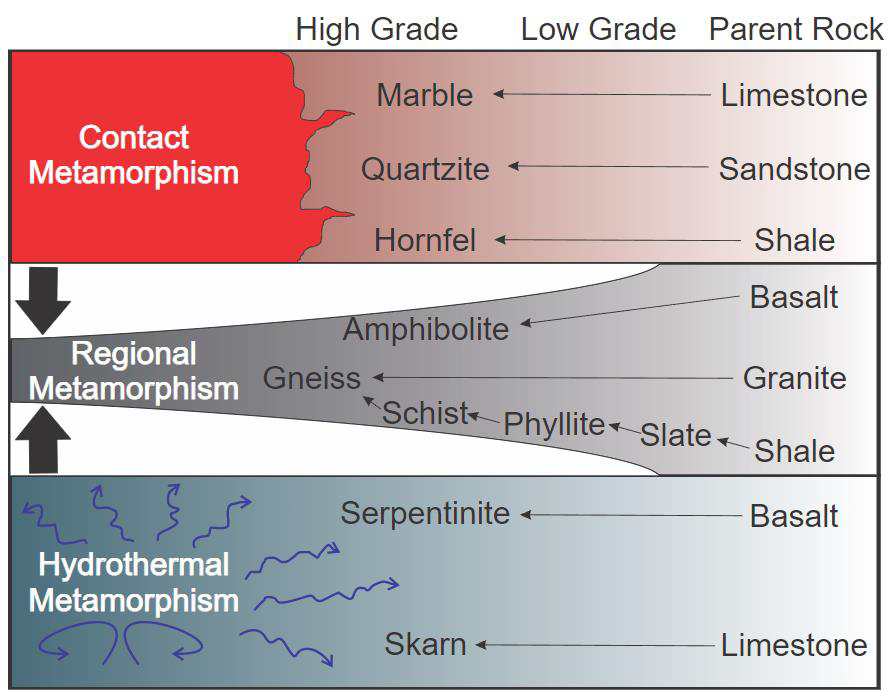
describe regional metamorphism
rock subjected to heat and pressure
e.g., under a mountain belt
cover a large area
most common in Ontario
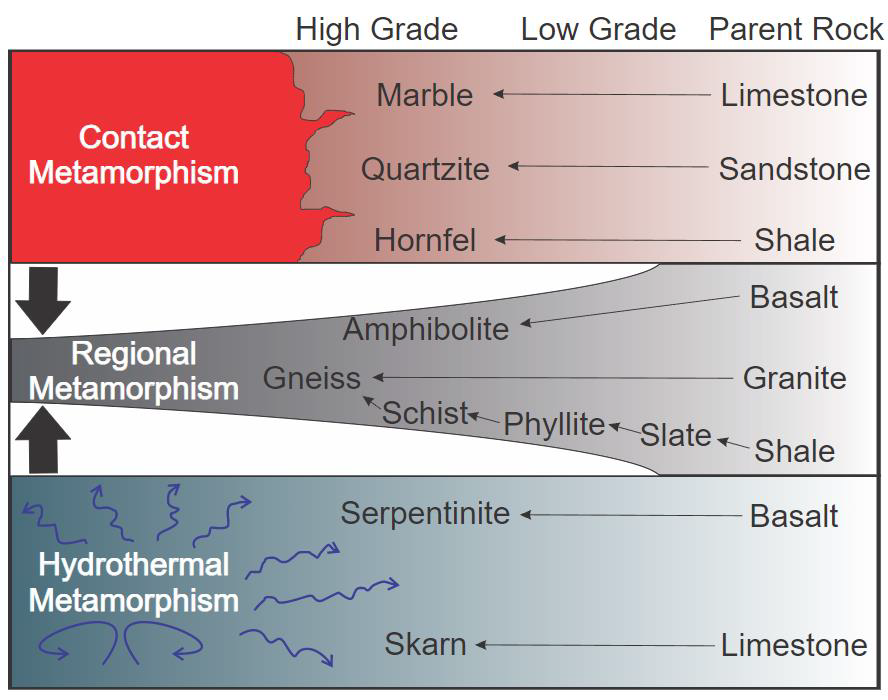
describe hydrothermal metamorphism
hot water removes or adds elements
e.e., basalt → serpentinite

what is a gneiss?
a high grade metamorphic rock
formed deep within the crust
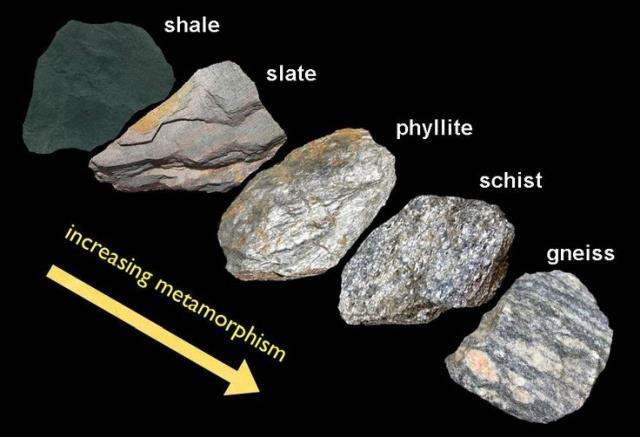
what does shearing a gneiss produce?
mylonite
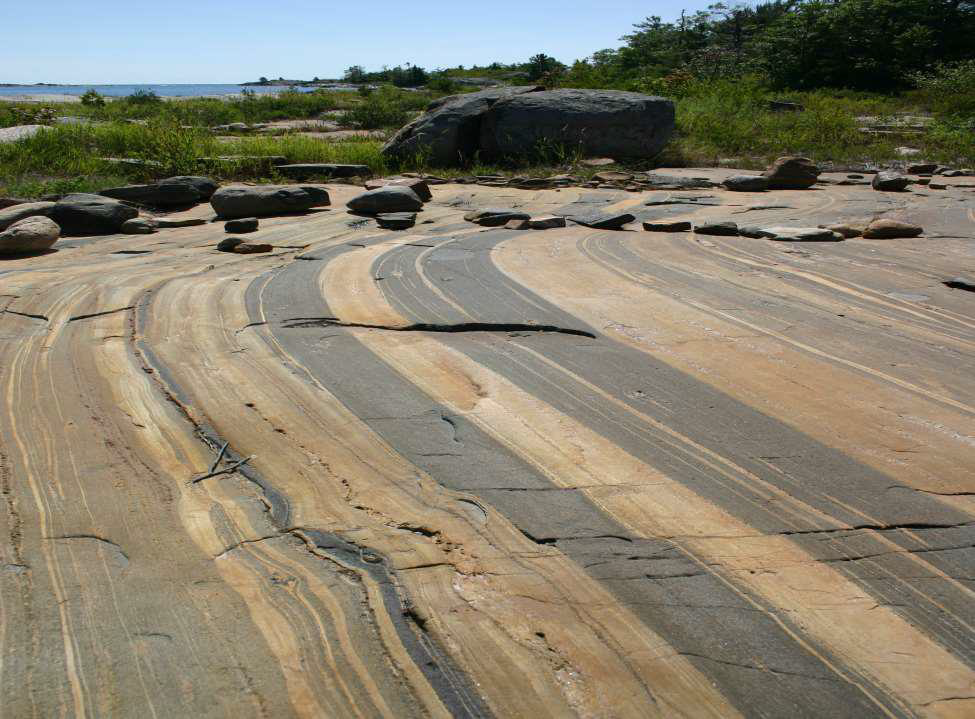
what does melting a gneiss produce?
migmatite
i.e., when gneiss wants to turn into magma
